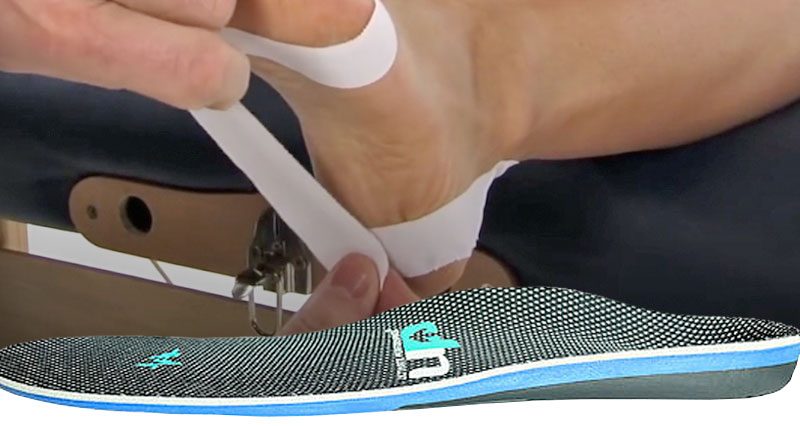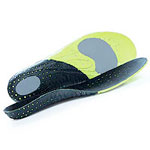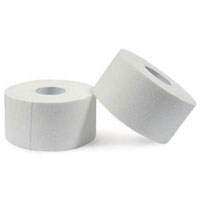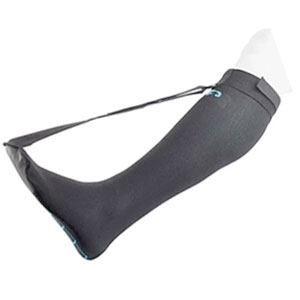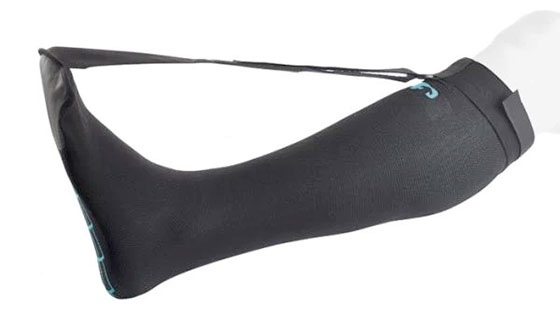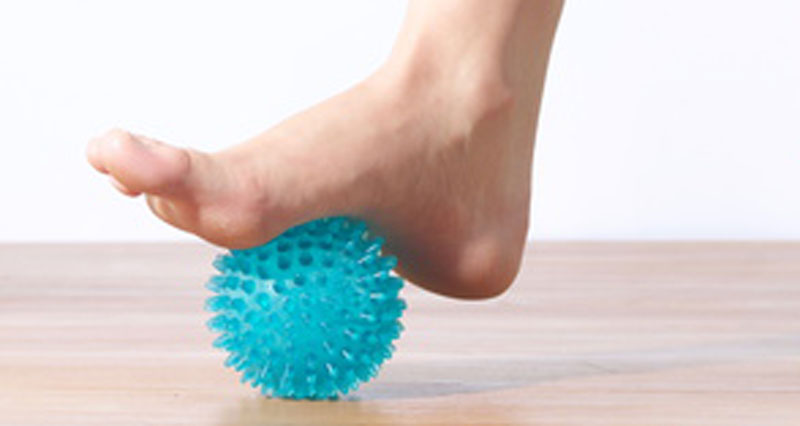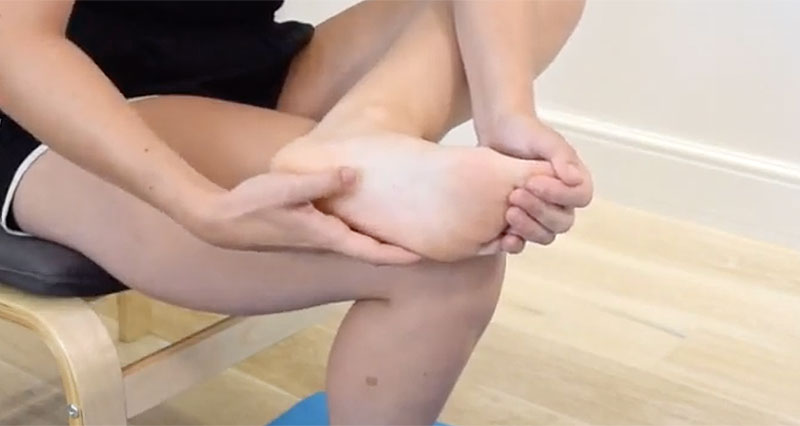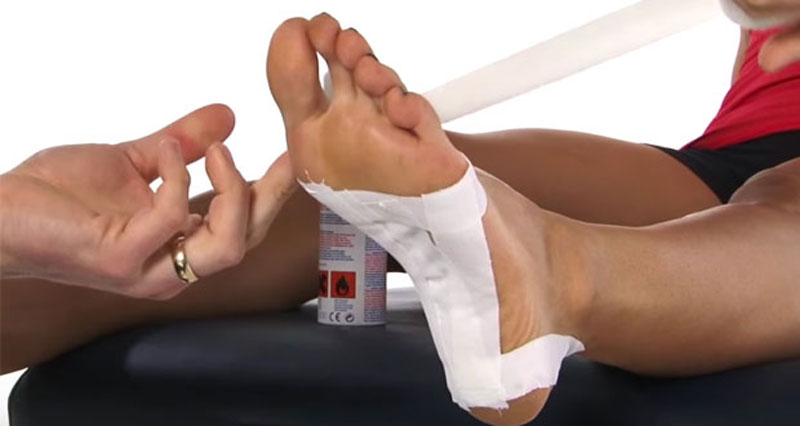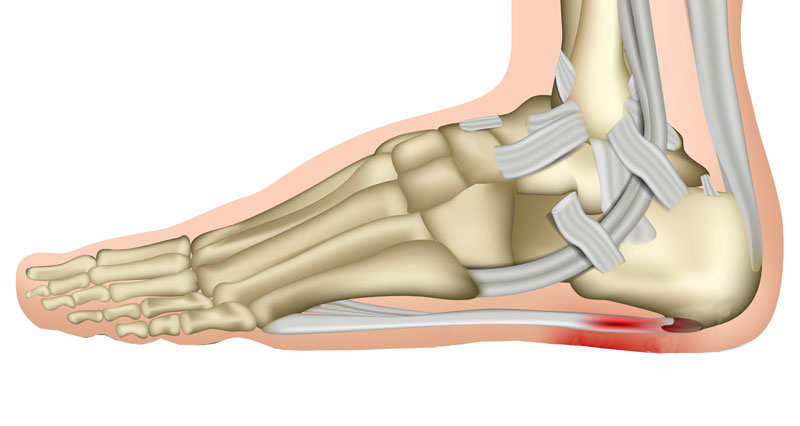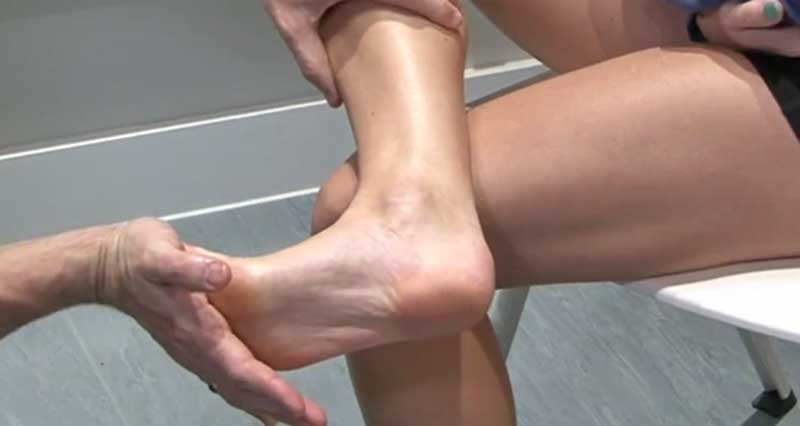Plantar fasciitis is very difficult to cure, especially as most of us have to be on our feet a lot. However, as a sports therapist having suffered myself and fully recovered here are my top 5 tips for curing Plantar fasciitis.
What is Plantar fasciitis?
Plantar fasciitis is the most common cause of pain under the heel with over 800 000 people searching online every month. Symptoms develop gradually and are usually worse first thing in the morning.
1. Wear insoles

Wear arch support or orthotic type insoles, or shoes/sandles which have an insole which supports your foot arch. Plantar fasciitis is caused by inflammation and degeneration of the plantar fascia at the point it inserts into your heel. If you foot flattens, the fascia pulls more at the heel making symptoms worse.
Arch support insoles support the arch of your foot, preventing it from flattening and overstretching your painful plantar fascia. However, don’t just wear insoles in your day to day shoes. Wear something ALL the time, from the moment you step out of bed, to the moment you go to bed. Wear arch support sandles inside. If you don’t have arch support insoles then tape your feet and wear comfortable trainers until you get some.
2. Tape your foot
Apply arch support taping to cure Plantar fasciitis also protects and supports your plantar fascia. There are a number of different ways to do this so experiment yourself until you find what works best for you. Basically you apply strips of tape under the arch of your foot. As a result, this prevents your arch flattening and overstretching.
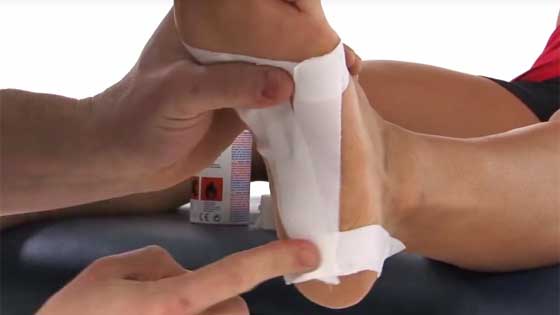
Taping is one of the most effective ways to relieve pain in the short term. However, after a couple of hours the tape stretches and is less effective. You need to keep re-applying it, especially if you are running or walking longer distances. Use 2.5cm or 3.8cm zinc oxide tape. Or you can use Kinesiology tape also.
3. Foot rolling to cure Plantar fasciitis
Roll your foot over a frozen bottle of water. Cold reduces pain and inflamation whilst pressure from rolling gently massages and stretches your plantar fascia.
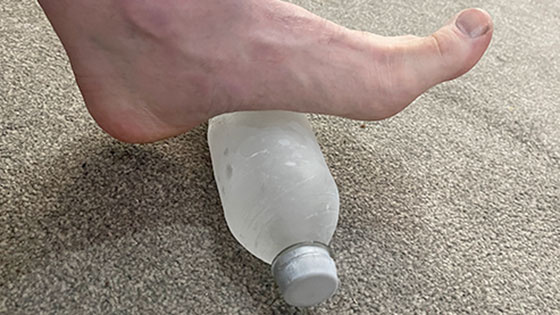
Keep a couple of frozen bottles of water in the freezer and roll your foot for 5 to 10 minutes every two hours. Reduce frequency as your symptoms improve.
4. Massage to cure Plantar fasciitis?
Try this simple massage technique which you apply yourself for a few minutes each day. A big cause of plantar fasciiits pain is tension in the fascia. Massage helps release tension.
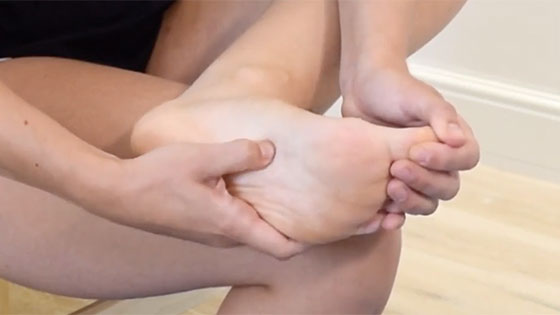
Take your big toe and bend it upwards into flexion. With your thumb, gently massage the plantar fascia along its length. You should be able to feel the areas which are more sore or tight. Then, bend your big toe even further and repeat the massage. Do this two or three times to release tension.
5. Stretching
To cure plantar fasciitis long term you need to stretch so your plantar fascia is not under so much stress. There are a couple of ways of doing this. The first is by stretching the fasica with your hands. A partner or therapist can help do this, or you can do it yourself. Holding the ball of your foot pull your foot upwards and hold for 10 to 15 seconds. You should feel a stretch under the arch of your foot. Don’t worry if you can’t feel it initially, keep holding the stretch and repeat this 2 or 3 times, and repeat this 2 or 3 times per day.
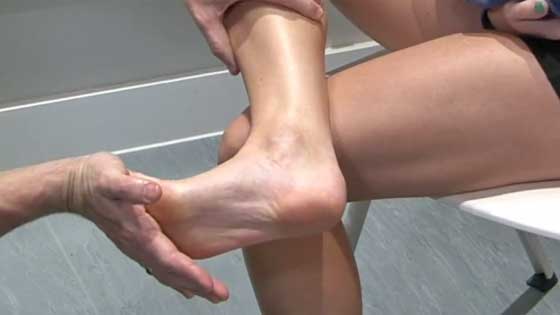
Another great way of stretching the plantar fascia is by using a night splint or sock. These keep your foot in a dorsiflexed position whilst you sleep. As a result, they prevent your fascia tightening up overnight and causing that familiar early morning heel pain.
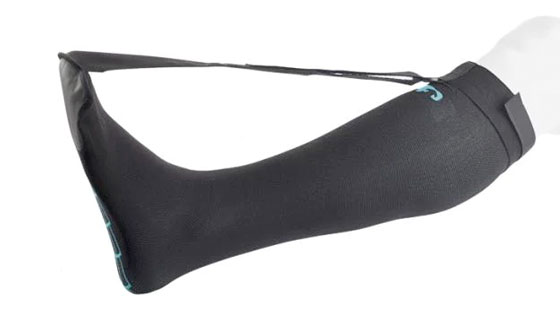
Make sure you don’t have it too tight. Your foot naturally tightens up overnight. Therefore, you may feel some discomfort wearing a night sock, especially if it is too tight. If this happens, take it off and try again tomorrow. Gradually you will be able to wear it for longer and eventually wake up pain free!
